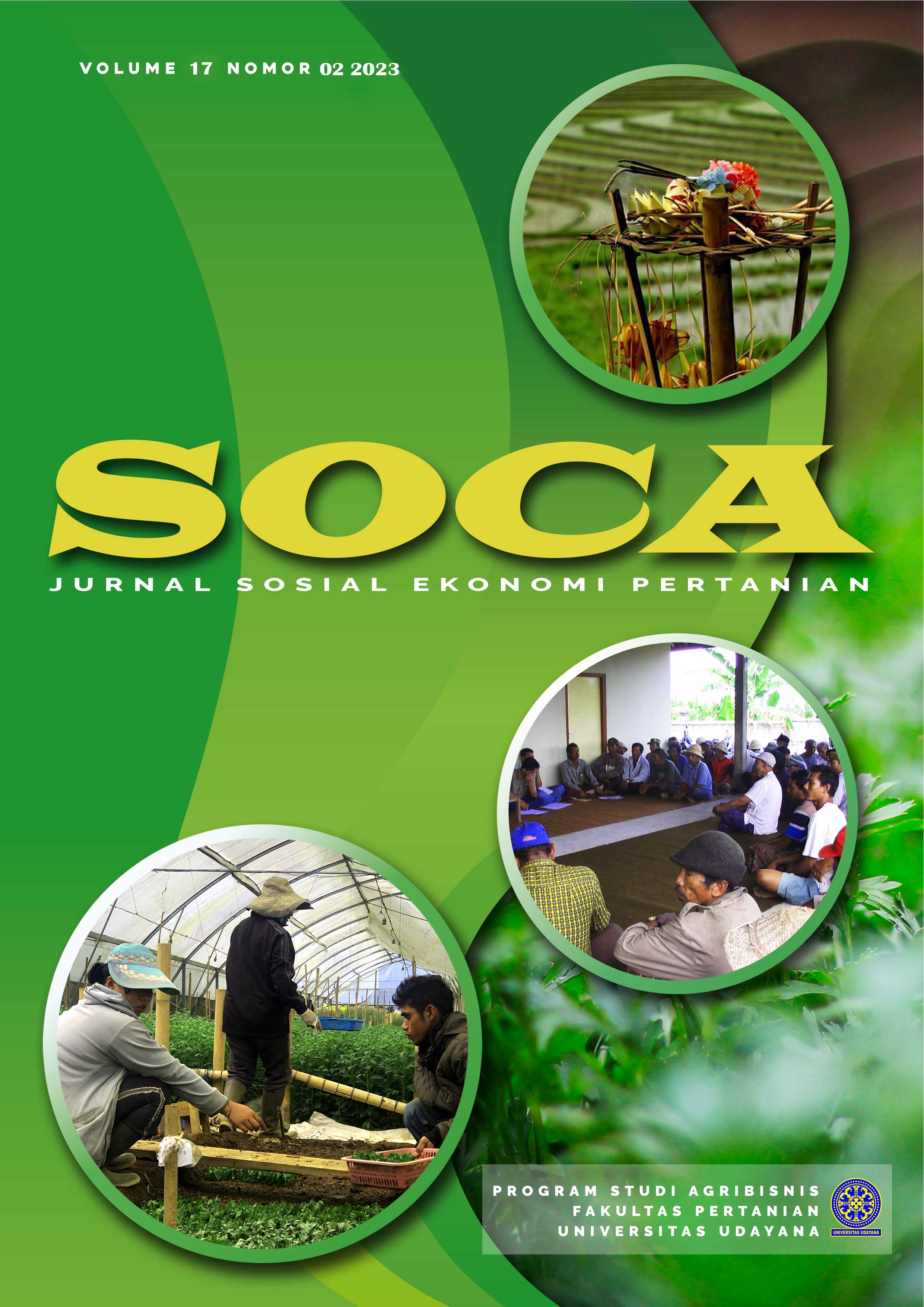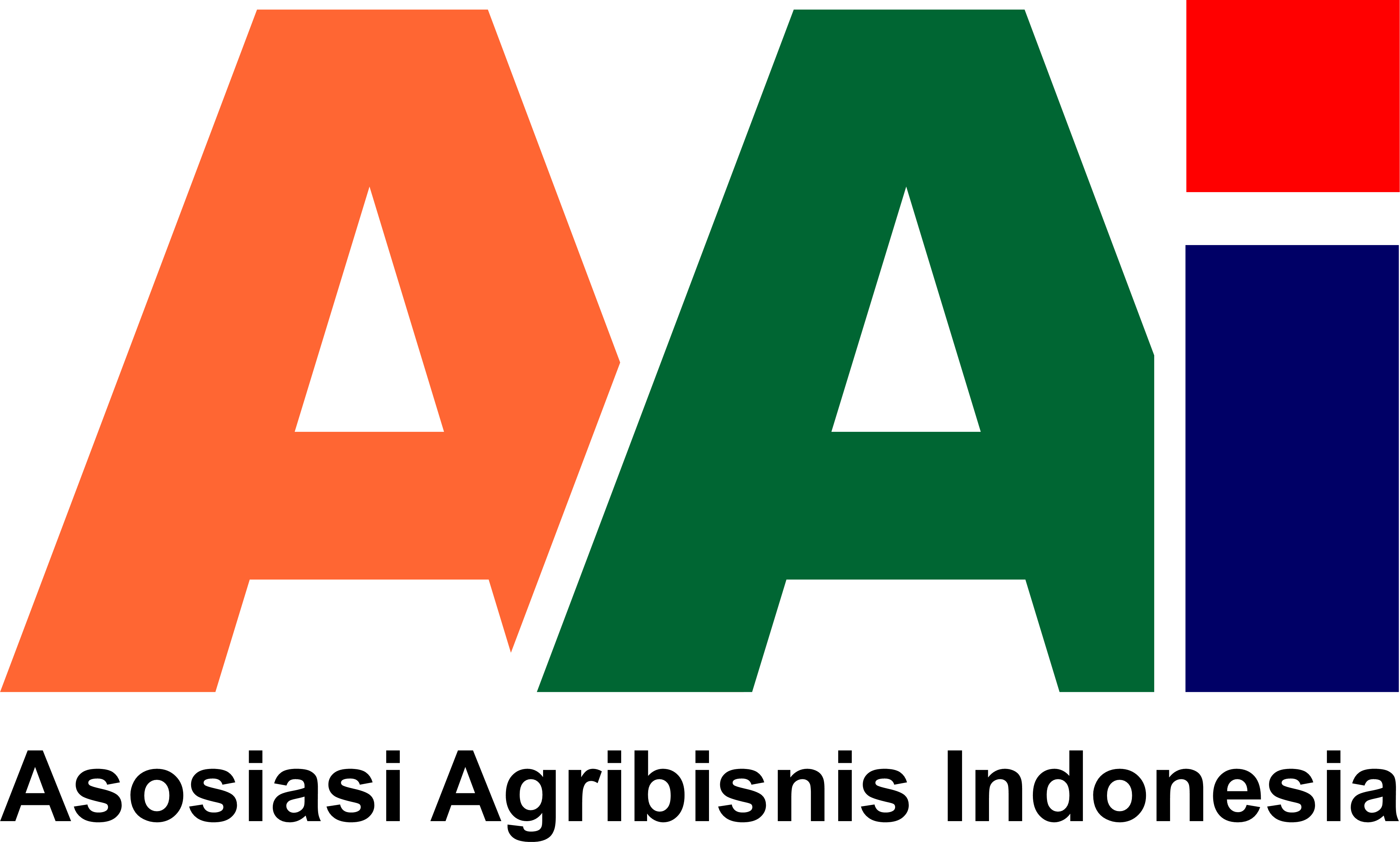Emerging Market Potential for Organic Farming Products
Abstract
Organic farming products need to be targeted towards specific market segments, particularly consumers who prioritize health and environmental concerns. However, the specialized market for organic agricultural products in Kota Batu is still in its infancy. This study aims to achieve the following research objectives: 1) assessing the potential and challenges of organic farming development, 2) identifying clusters within the organic farming sector, 3) developing an effective marketing system for organic farming products, and 4) determining optimal market locations for selling organic produce. The research was conducted in Kota Batu, East Java, in 2019, utilizing primary data gathered from farmers in fourteen villages. Quantitative descriptive analysis and the Analytical Hierarchy Process were employed to address the research objectives. The findings revealed the existence of organic farming clusters, including food crops (rice and corn), plantations (coffee), and horticulture (vegetables, fruits, and biopharmaceuticals). To develop the marketing system for organic agricultural products, emphasis was placed on organic certification, enhancing both the quality and quantity of products. Location development involved the centralization of markets, establishment of outlets for organic farming products, and improvements to infrastructure and facilities. To promote organic farming products, efforts were made to strengthen information dissemination through various media channels and foster a sense of community among consumers of organic farming products. The Town Square of Kota Batu and Central Market Batu emerged as the most strategically advantageous locations for marketing organic farming products, owing to their convenient accessibility for consumers
Downloads
References
Bezawada, R., & Pauwels, K. H. (2013). What Is Special About Marketing Organic Products? How Organic Assortment, Price, and Promotions Drive Retailer Performance. Journal of Marketing, 77(1), 31–51. https://doi.org/10.1509/jm.10.0229
BPS-Kota-Batu. (2020). Kota Batu dalam Angka 2020. Badan Pusat Statistik Kota Batu. https://batukota.bps.go.id/publication/2020/04/27/383dbaff7616e98ac9d0571c/kota-batu-dalam-angka-2020.html
De Silva, D., & Yamao, M. (2010). Rice pinch to war thrown nation: an overview of the rice supply chain of Sri Lanka and the consumer attitudes on government rice risk management. Journal of Agricultural Sciences, 4(2), 77. https://doi.org/10.4038/jas.v4i2.1647
Dinas-Pertanian. (2020). Laporan Penggunaan Lahan (SP Lahan). Dinas Pertanian Kota Batu.
Farikhah, S., Fatimah, N., & Luthfi, A. (2018). Pemberdayaan Masyarakat Desa Melalui Program Integrated Ecofarming (Studi Kasus di Desa Asinan Kecamatan Bawen Kabupaten Semarang). SOCA: Journal on Socio-Economics of Agriculture and Agribusiness, 12(1), 1–14. https://doi.org/10.24843/soca.2018.v12.i01.p01
Ferdous, Z., Zulfiqar, F., Datta, A., Hasan, A. K., & Sarker, A. (2021). Potential and challenges of organic agriculture in Bangladesh: a review. Journal of Crop Improvement, 35(3), 403–426. https://doi.org/10.1080/15427528.2020.1824951
Gracia, A. (2016). Consumers’ willingness-to-pay for sustainable food products: the case of organically and locally grown almonds in Spain. Journal of Cleaner Production, 118, 97–104. https://doi.org/10.1016/j.jclepro.2016.01.050
Grubor, A., Milicevic, N., & Djokic, N. (2018). Serbian organic food consumer research and bioeconomy development. Sustainability (Switzerland), 10(12), 1–12. https://doi.org/10.3390/su10124820
Hendri, L. W., Ismono, R. H., & Situmorang, S. (2020). Analisis Pendapatan Dan Keberlanjutan Usahatani Padi Sawah Organik dan Anorganik Di Kabupaten Pringsewu Provinsi Lampung. Jurnal Ilmu-Ilmu Agribisnis, 8(4), 547. https://doi.org/10.23960/jiia.v8i4.4697
Kai, S. B., Chen, O. B., Chuan, C. S., Seong, L. C., & Kevin, L. L. T. (2013). Determinants of willingness to pay of organic products. Middle East Journal of Scientific Research, 14(9), 1171–1179. https://doi.org/10.5829/idosi.mejsr.2013.14.9.1959
Kementan-RI. (2016). Penguatan Sistem Pertanian Organik Indonesia Menuju Berkembangnya Desa Pertanian Organik & Menguasai Pasar Organik Dunia (Issue April). http://bbppmbtph.tanamanpangan.pertanian.go.id/index.php/berita/95
Kotler, P., & Armstrong, G. (2014). Principles of Marketing (Fifteenth Edition). In The great impulse challenge.
Kotler, P., & Keller, K. L. (2012). Marketing Management (14th ed.). Prentice Hall. https://doi.org/10.4324/9781315099200-17
Kuboń, M., & Olech, E. (2018). Marketing of organic products in southern Poland. 01014, 1–5. https://doi.org/10.1051/bioconf/20181001014
LAKIP-Disperta. (2018). Laporan Akuntabilitas Kinerja Instansi Pemerintah. Kota Batu. Unpublished
Muller, A., Schader, C., El-Hage Scialabba, N., Brüggemann, J., Isensee, A., Erb, K. H., Smith, P., Klocke, P., Leiber, F., Stolze, M., & Niggli, U. (2017). Strategies for feeding the world more sustainably with organic agriculture. Nature Communications, 8(1), 1–13. https://doi.org/10.1038/s41467-017-01410-w
Murdayanti, M., Tarik Ibrahim, J., & Baroh, I. (2021). Farmer Empowerment Strategies Through Organic Vegetables Development. SOCA: Jurnal Sosial, Ekonomi Pertanian, 15(1), 108. https://doi.org/10.24843/soca.2021.v15.i01.p10
Pearson, D., & Henryks, J. (2008). Marketing organic products: Exploring some of the pervasive issues. Journal of Food Products Marketing, 14(4), 95–108. https://doi.org/10.1080/10454440801986421
Purwaningsih, Y., Widiyanti, E., & Cahyadin, M. (2017). Trading system of food commodity. Economic Journal of Emerging Markets, 9(2), 172–180. https://doi.org/10.20885/ejem.vol9.iss2.art6
Radojević, V., Tomaš Simin, M., Glavaš Trbić, D., & Milić, D. (2021). A profile of organic food consumers—Serbia case-study. Sustainability (Switzerland), 13(1), 1–22. https://doi.org/10.3390/su13010131
Rahmann, G., Ardakani, M. R., Bàrberi, P., Boehm, H., Canali, S., Chander, M., David, W., Dengel, L., Erisman, J. W., Galvis-Martinez, A. C., Hamm, U., Kahl, J., Köpke, U., Kühne, S., Lee, S. B., Løes, A. K., Moos, J. H., Neuhof, D., Nuutila, J. T., … Zanoli, R. (2017). Organic Agriculture 3.0 is innovation with research. Organic Agriculture, 7(3), 169–197. https://doi.org/10.1007/s13165-016-0171-5
Relawati, R., Ariadi, B. Y., Bakhtiar, A., & Minarsih, I. (2022). Perilaku Konsumen Pangan Organik. Bildung.
Relawati, R., Szymoniuk, B., Ariadi, B. Y., & Handayanto, E. (2022). Pricing Strategy for the Organic Eggs: Willingness to Pay and Hedonic Price Approaches. SOCA: Jurnal Sosial Ekonomi Pertanian, 16(1), 781–792. https://doi.org/10.24843/SOCA.2022.v16.i01.p11
Roitner-Schobesberger, B., Darnhofer, I., Somsook, S., & Vogl, C. R. (2008). Consumer perceptions of organic foods in Bangkok, Thailand. Food Policy, 33(2), 112–121. https://doi.org/10.1016/j.foodpol.2007.09.004
Rozaki, Z., Salassa, D. I., & Nugroho, R. B. (2020). Farmers’ responses to organic rice farming in Indonesia: Findings from Central Java and South Sulawesi. Open Agriculture, 5(5), 703–710. https://doi.org/10.1515/opag-2020-0070
Safitri, Y., Listiana, I., Yanfika, H., & Silviyanti, S. (2022). Application Of Organic Vegetable Cultivation With The Utilisation Of The Yard. 16(3), 279–289. https://doi.org/10.24843/SOCA.2022.v16.i03.p05
Sarti, S., Darnall, N., & Testa, F. (2018). Market segmentation of consumers based on their actual sustainability and health-related purchases. Journal of Cleaner Production, 192, 270–280. https://doi.org/10.1016/j.jclepro.2018.04.188
Sobocińska, M., Kociszewski, K., Mazurek-łopacińska, K., Skowron, S., & Graczyk, A. (2021). The role of marketing in shaping the development of the market of organic farming products in Poland. Sustainability (Switzerland), 13(1), 1–20. https://doi.org/10.3390/su13010130
Szymoniuk, B., & Valtari, H. (2018). The REKO system in Finland: A new model of a sustainable marketing channel. Problemy Ekorozwoju - Problems of Sustainable Development, 13(2), 103–111. https://doi.org/bwmeta1.element.baztech-8d4dbec9-fdc6-4b9f-93dc-1c46645ee2d2
Szymoniuk, Barbara. (2003). Rural Clusters in the Lublin Region (Eastern Poland) - Good Solutions for a Young Democracy. 43rd Congress of the European Regional Science Association, 1–7.
Szymoniuk, Barbara. (2004). Setting up rural clusters in Poland. Europe at the Margins: EU Regional Policy, Peripherality and Rurality, 1–8.
Tal, A. (2018). Making conventional agriculture environmentally friendly: Moving beyond the glorification of organic agriculture and the demonization of conventional agriculture. Sustainability (Switzerland), 10(4). https://doi.org/10.3390/su10041078
Verain, M. C. D., Sijtsema, S. J., & Antonides, G. (2016). Consumer segmentation based on food-category attribute importance: The relation with healthiness and sustainability perceptions. Food Quality and Preference, 48, 99–106. https://doi.org/10.1016/j.foodqual.2015.08.012
Wangge, R. K., & Noni, S. (2021). Strategi Bauran Pemasaran Sayuran Dalam Meningkatkan Minat Beli Konsumen. Jurnal Agribisnis, 10(1), 53–59. https://doi.org/10.32520/agribisnis.v10i1.1523
Zhang, B., Fu, Z., Huang, J., Wang, J., & Xu, S. (2018). Consumers’ perceptions, purchase intention, and willingness to pay a premium price for safe vegetables: A case study of Beijing, China Conventional vegetable. Journal of Cleaner Production, 197, 1498–1507. https://doi.org/10.1016/j.jclepro.2018.06.273













